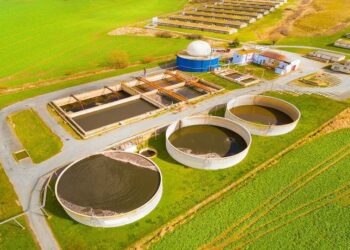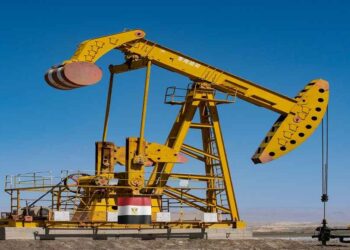Almost 50 countries from continents across the world – including large and emerging critical mineral producers and consumers – came together today with leaders from industry, investment and civil society at the first IEA Critical Minerals and Clean Energy Summit to share experiences and discuss effective courses of action on critical minerals to ensure rapid and secure energy transitions.
The first-of-its-kind international summit builds on the ministerial mandate given to the IEA in 2022 to further its work on critical minerals, the materials at the heart of key clean energy technologies such as wind turbines, electric vehicles and solar panels. The IEA has been asked by governments around the world to make recommendations on options to diversify supplies of critical minerals and clean energy technology manufacturing. To deliver on this, the IEA is creating a new Energy Security and Critical Minerals Division within its Secretariat dedicated to these issues.
“The level of over-concentration that we see in critical minerals markets today is unlike that for any other major commodity we have come to rely on in the modern world. History has shown us that failing to properly diversify supplies and trade routes of essential resources comes with profound risks,” said IEA Executive Director Fatih Birol. “Locking in secure and sustainable supplies of critical minerals for the clean energy transition has quickly become a top priority for governments, companies and investors around the world. The IEA has been working on this issue for years and established a leadership role, as reflected by the broad and high-level participation in this Summit. With many stakeholders now asking how well prepared they are for this new reality, the IEA is expanding and deepening our work to help countries around the world develop robust and resilient clean energy supply chains.”
The first annual IEA Critical Minerals Market Review, released in July along with a new online data explorer, shows that record deployment of clean energy technologies is propelling huge demand for minerals such as lithium, cobalt, nickel and copper. Devising new strategies to meet this new wave of demand was at the centre of discussions among participants at today’s Summit. Six key action areas were identified including: 1) accelerating progress towards diversified minerals supplies; 2) unlocking the power of technology and recycling; 3) promoting transparency in the markets; 4) enhancing the availability of reliable information; 5) creating incentives for sustainable and responsible production; and 6) strengthening efforts on international collaboration.
“Fostering inclusive dialogue must be at the forefront of the critical minerals agenda as we navigate this complex and multifaceted issue within the clean energy transition,” Dr. Birol said. “Through its analysis and data, it is the IEA’s mission to ensure that critical minerals become a symbol of international cooperation rather than resource anxiety.”
The Summit has delivered six key actions to ensure secure, sustainable and reliable supplies of critical minerals:
- Accelerate progress towards diversified minerals supplies: To support countries’ climate and clean energy ambitions, it will be necessary to significantly increase supplies of many minerals and metals. Progress on diversifying supply sources has also been limited in recent years. Delegates agreed on the need to accelerate progress towards diversified and sustainable supplies of critical minerals. Beginning with the landmark 2021 report The Role of Critical Minerals in Clean Energy Transitions, the IEA has continuously shone a spotlight on the topic of critical minerals, with a particular focus on need to expand supply to support net zero goals while ensuring a diversified, secure marketplace.
- Unlock the power of technology and recycling: Participants underscored the importance of tapping the full potential of technology and recycling to alleviate potential strains on supply. New technology can reduce energy and water requirements in extraction and processing, optimise extraction methods, product design and end-of-life processes to improve resource efficiency. The IEA will also undertake an in-depth study to examine effective approaches to recycling covering all potential sources such as e-waste, industry scrap, end-of-life batteries, wind turbines and permanent magnets.
- Promote transparency in markets: Some critical minerals markets are characterised by limited price transparency that can introduce volatility and hinder new investments. There are also increasing calls from consumers for more information about the risks throughout the supply chain. The participants emphasised the need to promote transparent markets that facilitate new investments by reinforcing due diligence and traceability practices. The IEA will strengthen its market monitoring capabilities, including supply and demand projections as called for in the G7 Five-Point Plan for Critical Minerals Security. In 2023, the inaugural edition of the IEA Critical Minerals Market Review provides a comprehensive market outlook. The report will be produced on a regular basis, as the IEA already does for oil, gas, electricity, renewables and other areas of the energy system.
- Enhance the availability of reliable information: Data is vital to ensuring a well-functioning market and to allow companies and policymakers to set priorities and address potential chokepoints. The IEA has a longstanding role as the premier provider of accurate, up-to-date data. Together with partners, the IEA will play a leading role in exploring how this experience can enable public data sharing around critical minerals.
- Create incentives for sustainable and responsible practices: Summit participants highlighted the importance incentivising sustainable and responsible production of critical minerals such as rewarding environmental, social and governance (ESG) efforts and speeding up approvals of new facilities without loosening legal and regulatory protections. The IEA’s Critical Minerals Policy Tracker monitors policy developments and ESG concerns, in addition to working with governments and other stakeholders to develop new policy guidance to reduce the negative impacts of minerals production.
- Foster international collaboration: A recurring theme throughout the Summit was that demand growth for critical minerals cannot be solved by any one country or company. Strengthening efforts on international collaboration among governments, market participants, civil society and international organisations is crucial to meet these challenges in an inclusive manner. One specific area is efforts to enhance security of supply by exploring mechanisms that include voluntary stockpiling alongside other measures to help enhance the resilience of supply chains. The IEA has a long history of facilitating dialogue between leaders from government, industry and civil society through events like the Summit.
Looking ahead, the IEA will hold a Ministerial Meeting in February 2024, coinciding with the 50th anniversary of the Agency’s founding. The 2024 Ministerial will provide a key opportunity for countries to assess what critical minerals mean for the changing landscape of international cooperation on energy security and climate change, including the role of the IEA in ensuring a secure, sustainable and responsible supply of critical minerals for clean energy supply chains. This will include announcing the next phase of the IEA Voluntary Critical Mineral Security Programme, which will include options for stockpiling and other measures designed to ensure transparent and resilient supply chains based on shared experience and information.



















































